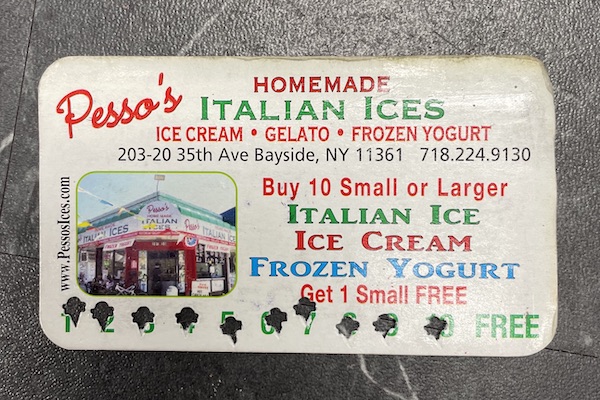Published on the 14/02/2024 | Written by Heather Wright

Aim low for early success…
Jonathan Reeve has a simple message for local businesses looking to tap into personalisation when it come customers: “Don’t shoot for the stars.”
As vice president APAC for SaaS customer engagement vendor Eagle Eye, a company backed and run by former Tesco bosses, Reeve is, of course, invested in encouraging personalisation.
But he says it remains an elusive area for most Australian and New Zealand businesses.
“To compete on a level playing field it’s becoming more important for traditional retailers to be connecting with their end consumers.”
“There are very, very few businesses that have truly started on this journey. There are very few retailers where you are actually engaging with them in the same way you have started to now with Woolworths New Zealand,” he says.
Reeve is, of course, referring to the launch of Woolworths New Zealand’s Everyday Rewards – based on the Australian version of the same name and, just like the Australian version, touting personalised ‘boosts’, enabling customers to earn points more rapidly.
But while Woolworths might have the might – and resources, including its own data resources team – Reeve says other businesses, who might well be put off by what the big names are doing, can still get in on the act.
“You just need something that is getting customers to be engaging with you digitally, creating that digital connection. It doesn’t need to be a highly personalised scheme, it’s just trying to create something simple that will start to get customers engaged and can get you started on the journey.”
Shooting for the stars, he says, is often where businesses fall down. But starting, well, that’s something Reeve believes is important.
While e-commerce providers have been using customer data to provide highly tailored experiences, he says more traditional retailers face the challenge that their customers could be spending thousands, or tens of thousands, with them each year and they wouldn’t even know their name unless they’re in a loyalty program.
“Amazon and the e-commerce pure plays have a digital connection to you, inherent in their business model. They are getting your email address, maybe your phone number, you might be connecting via an app…
“What you are seeing is that to compete on a level playing field with Amazon and the e-commerce pure plays who are moving into more and more sectors, it’s just becoming more and more important for traditional retailers to be connecting with their end consumers.”
In the retail space, Reeve says that’s translating to much more focus on loyalty – in particular, personalised loyalty programs.
Data, particularly first-party data with its insights into customer behaviour and preference, is valuable currency for retailers in their race for deeper ‘connections’ with consumers.
A Deloitte Consulting APAC report noted that among publishers and app developers, 65 percent expect the rise of privacy to impact advertising revenues – but 73 percent say using first-party data will mitigate the impact of that rise of privacy.
Of course its not a lack of data that’s usually an issue for most businesses. In fact, it’s often the other end of the spectrum, with most companies sitting on a gold mine of untapped data.
“Lots of businesses already ahve the data and analytics capabilities to determine an optimal weekly set of completely personalised offers for millions of individual customers,” Reeve says.
But he says the right ‘engine’ is also needed to execute on those offers.
Hundreds of millions of personalised offers will be delivered each week across Australia and New Zealand by Woolworths, executed in ‘real-time’ so customers don’t get held up online or in the store. That amounts to potentially several hundred transactions a second at peak times.
“Very few platforms can do it at scale.”
While Reeve’s focus is retail, he says it extends well beyond that market.
“People are used to the level of personalisation they get with a Netflix, Spotify, Amazon or Uber. They’re expecting to be able to interact digitally and in real-time with the businesses they deal with. We’re seeing it in retail through loyalty programs, but it is pretty much the same in most sectors with people expecting the same level [of personalisation] they’re used to with digital first businesses.”
In Reeve’s view, personalisation is ‘the nirvana’ – a move to true one-to-one marketing.
Analysing customer’s individual purchases and providing a complete set of personalised recommendations offers the change for greater engagement and customer loyalty, some discrete upselling with ‘stretch’ offers to encourage customers to buy something they might not normally purchase, and the chance for retailers – and other businesses – to run more smartly and efficiently.
“In lots of sectors you have this incredibly inefficient model of store-wide promotions. You’re having to change stock each week, change promotional material, maybe do printed catalogues for promotions which may or may not be relevant to people.
“If you’re doing it personalised and digitally, it becomes much more efficient, so it’s enabling retailers to save money and not have to do store-wide promotions. Over time that is going to be a massive saving for retailers.”
Building a strong ecosystem of partners around the ‘currency’ – where purchases from other stores count towards the scheme’s ‘currency’ – of the scheme is also key.
He dubs Canadian grocery store Loblaw as a world leader and says their loyalty currency is the ‘second biggest currency after the Canadian dollar, in the country because so many people are using it and it connects together so many different businesses’.
Reeve says existing programs – such as Air Points and FlyBuys – along with newcomers will be looking to build out their ecosystems in the coming years to make their currency the loyalty currency.
“So if you’re a business and forming a view on which of those is doing well and which one you might want to participate in is probably a choice quite a few businesses are going to face in different sectors.”
There is, of course the issue of data privacy. Reeve admits there’s a tradeoff to be had – and it’s the customer providing data in order to receive some benefits.
“They are literally seeing every single purchase you’re making.”
In Australia, the Privacy Act Review has included a proposal to enable opting out of targeting and personalisation. Woolworths Australia, which sells targeted advertising to its suppliers, has called for loyalty programs to be exempt from severe targeting restrictions.



























